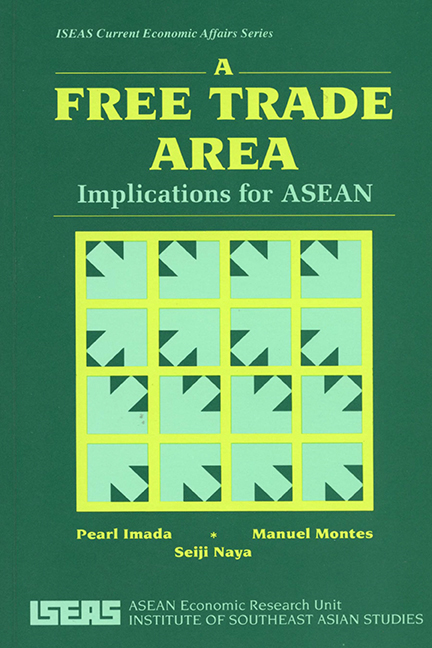Book contents
4 - An Econometric Analysis of Intra-ASEAN Trade
Published online by Cambridge University Press: 21 October 2015
Summary
In this section, the results of a 50-per cent preferential tariff reduction experiment using a trade-linked econometric model will be discussed. Because of the macro-economic nature of the model, concepts such as “trade diversion” and “trade creation”, which implicitly begin from a full-employment assumption, are not strictly applicable to the results. This differs from a purely allocational analysis in that macro-econometric models tend to embody highly elastic supply sides. This characteristic is applicable to economies operating far enough from full employment that resources can still be drawn into production in response to policy changes, even though these models will allow price to increase as capacity is utilized (that is, supply is not perfectly elastic but is elastic enough). The assumption implicit in the experiment is that the necessary supply response (and, additionally, the trading infrastructure) will be forthcoming as a result of a 50-per cent intra-ASEAN tariff cut.
Description of the Model
The Asia-Pacific trade-linked model used consists of seven national econometric models (Indonesia, Malaysia, the Philippines, Singapore, Thailand, Japan, and the United States) which are linked through a trade subsystem. 5 The basic model has a total of 1,967 variables and 821 equations. The original model was estimated for data up to 1986. The trade linkage system of the model has been re-estimated using data up to 1988.
In the model, trade is aggregated into three commodities: primary goods (SITC 0,1,2, and 4), oil (SITC 3), and manufactured goods (SITC 5-9). There are nine trading “countries” involved in bilateral relations in the model, that is, the seven countries for which national models exist, the European Economic Community (EEC), and the rest of the world (ROW). A limitation of the model at this time is that there are no “country models” for the EEC and the rest of the world. This means that while the results will be sensitive to relative price changes on the trade side, the potential “second-round” influences arising from the responses of the internal economies of the EEC and the ROW to trade changes will not be reflected in the results.
- Type
- Chapter
- Information
- A Free Trade AreaImplications for ASEAN, pp. 24 - 33Publisher: ISEAS–Yusof Ishak InstitutePrint publication year: 1991



